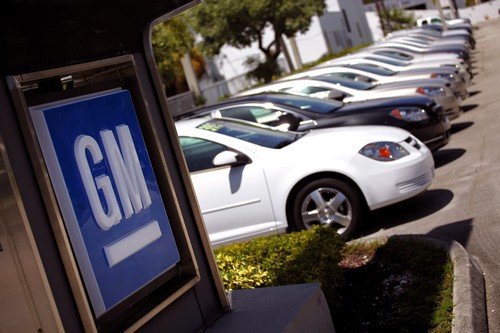The General Motors Company pioneer in designing, building and selling cars, trucks, crossovers and automobile parts globally and it is the leading American Corporate established in the year 1908.
The company in order to support its mainline business also offers automotive financing services through General Motors Financial Company, Inc. (GM Financial). It operates with brands such as Cadillac, Buick, Chevrolet, Maven, Onstar, Fawjiefang, Holden, and Wuling.
Table of Contents
Segmentation, targeting, positioning in the Marketing strategy of General Motors –
In order to understand the different similar groups and their characteristics, Segmentation is used which helps in creating the offerings based on the attributes highlighted by the groups. General Motors uses demographic, psychographic and geographic segmentation strategies with variables such as gender, income, region, age, and marital status.
With such a large brand portfolio, General Motors uses differentiating targeting strategy.
General Motors positions its offerings based on advanced technological capabilities, features, and design which helps the brand in creating value for money and high brand recall in the mind of the prospective customers.
Marketing mix – Here is the Marketing mix of General Motors.
SWOT analysis – Here is the SWOT analysis of General Motors.
Mission- “To care about a customer, not just when they purchase a new vehicle, but for as long as they own the vehicle”
Vision- “To Earn Customers for Life”
Tagline-“Not Available”.
Competitive advantage in the Marketing strategy of General Motors–
1. Research and Intellectual Properties:
The company has been extensively working on on-demand mobility services, greenhouse gas emission control system, autonomous vehicles, electric cars, hybrid cars in order to be a future-ready automotive company.
2. Extensive reach globally:
The competitive position of the brands and group varies country to country and comes under the business segments of GM International and GM North America. The cars of the group are distributed in Asia-Pacific regions, Europe, America, Middle East and Africa.
BCG Matrix in the Marketing strategy of General Motors-
The operating segments through which company operates in the market are GM Financial, GM International Operations (GMIO), GM North America (GMNA), GM South America (GMA). However, GMSA becomes part of GMIO and GM financial has financing and support role.
Its business in the segment GMNA business due to having the strong position in the market stars in the BCG matrix while others are the question mark.
Distribution strategy in the Marketing strategy of General Motors–
The Company distributes its vehicles and automotive parts through the network of independent authorized retail dealers globally.
These outlets are in form of distributors, dealers and authorized sales/ service and accessories outlets.
In the recent time’s company has been pruning its loss-making dealerships and even exited some countries like that of India.
The company has 4809 authorized dealerships under GM North America and 7641 dealerships under GM international.
Brand equity in the Marketing strategy of General Motors–
The General Motors has been ranked 40th in Forbes magazine list of Global 2000 companies (as of May 2017). The brand has been valued at $ 50.8 billion as of May 2017 (market capitalization value method) generating revenue of $166.38 billion.
General Motors have won several awards and accolades over the period of time some of which are Chevrolet Bolt EV being named to WardsAuto 10 Best Engines List, Kelley Blue Book Best Resale Value Awards for Chevrolet Trucks (2018), GMC Wins Most Refined Brand, IHS Markit Loyalty Awards etc.
Competitive analysis in the Marketing strategy of General Motors-
The primary factor that determines consumer vehicle preferences in the markets includes vehicle design, fuel economy, available choices, price, quality, safety, reliability, and functionality.
It competes with companies such as Suzuki, Honda, Toyota, Hyundai, Tata, and Volvo in one or more products segments.
Market analysis in the Marketing strategy of General Motors-
Sluggish economic growth and credit constraints, government regulations, carbon emission, political stability, brand acceptance are some of the factors which are affecting the industry.
Increasing import tariffs, suppliers & customers bargaining power due to a large number of options in the market and government changing regulations, changing the lifestyle of the consumers, rising middle class, the potential in the emerging markets are the factors which are driving the growth for the companies operating in the industry.
Customer analysis in the Marketing strategy of General Motors–
The company operates in both B2C and B2B segment. In the retail segment, it distributes its Cars, Trucks and related parts through its dealership network to individual customers who majority are in the age group of 30-50 years.
Also in the B2B segment its sell the offerings to leasing companies, daily rental car companies, fleet customers, commercial fleet customers, and governments.
Liked this post? Check out the complete series on Strategies


As a GM retiree I want to buy its vehicles and have for 50 years but their marketing is making it more difficult. Why should I have to buy a luxury highly optioned vehicle to have the latest safety technology when foreign brands make it standard equipment? Seems even bankruptcy couldn’t fix their fragmented matrix management lacking real leadership.
You have no idea how many times your commercial runs a day in our area code, 70808.
It is insulting to expect that we
are not aggravated with your choice. My family has always been GMC truck buyers.
I intend to boycott GMC simply because of this revolting add.